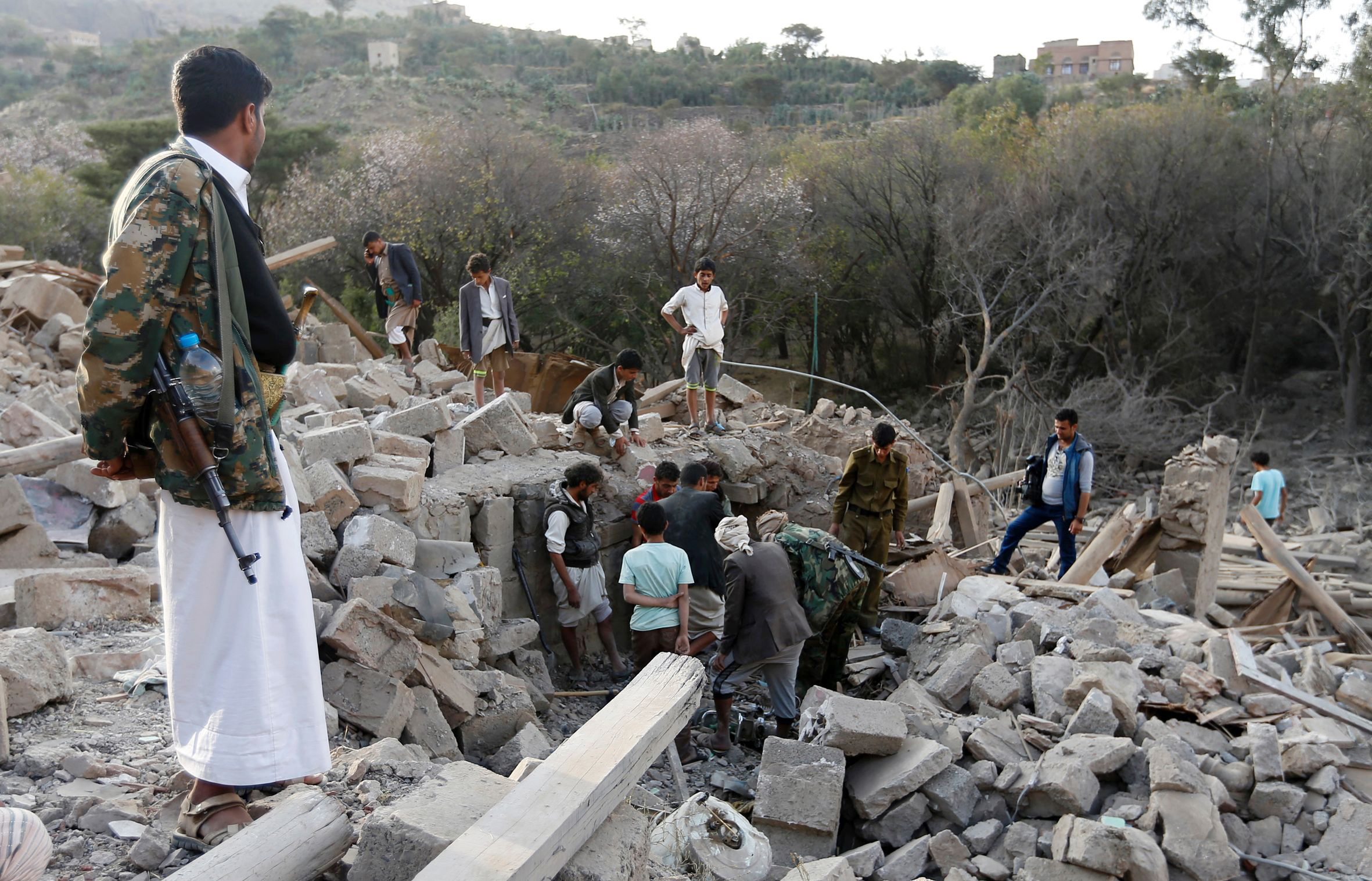US Defends Release of 9-Year-Old Bomb-Making Video Seized in Yemen Raid
It's rare for military to release material from an intelligence-gathering raid.
— -- In an unusual move, the U.S. military today publicly released clips from a bomb-making video seized by Navy SEALS Sunday during a deadly raid on al-Qaeda in the Arabian Peninsula in Yemen that killed 14 militants but also claimed the lives of some civilians and a U.S. service member.
But U.S. Central Command promptly removed the video from the military's video website after discovering it has been publicly available on the internet since late 2007.
It is rare for the U.S. military to make public materials seized in intelligence-gathering raids, and U.S. Central Command (Centcom) says other materials seized in the raid are classified and will not be made public.
The video originally posted by Centcom today is a short compilation of five longer videos found on a computer seized in the raid.
In a statement, Centcom described the video as "a series of detailed, do-it-yourself lessons intended for aspiring terrorist bomb-makers and included an exhortation to use those techniques to attack the West."
The video was removed hours after its online posting when Centcom received information from the general public and a journalist that the video was already available on line.
"I don’t want it to appear like we were passing out old-as-new information," U.S. Central Command spokesman Col. John Thomas said today. "We were just trying to do due diligence and help explain the kind of intelligence data we exploit at sites light this."
Thomas denied there was any political pressure to take the unusual step of releasing the video.
"None, whatsoever," he said. "This idea was organic to Centcom and the special operations folks who were doing their best to try and answer the questions that had appeared in public about what kinds of information are worth putting boots on the ground for.“
He added that the video's release was intended to clear up any confusion about the purposes of raids conducted by special operations forces to gather intelligence, which was the primary objective of last weekend's mission.
The spokesman said the video was chosen because “it was the most accessible, easy to understand, easy to declassify and exemplary of the kind of work that AQAP does every day. Trying to inspire terrorism and export plans and methods to aspiring terrorists.”
Thomas welcomed "the instantaneous input that helped us understand better that video, to put it in context."

A Pentagon spokesman said the age of the video should not matter because it demonstrates the intentions of al-Qaeda in the Arabian Peninsula (AQAP).
“It does not matter when the video was made. That they had it is still illustrative of who they are and what their intensions are,” Capt. Jeff Davis, the Pentagon spokesman, told reporters after the video was taken off the web.
"There was significant actionable intelligence that they received and that continues to be the case.”
Col. Thomas agreed, noting the video "doesn’t invalidate that it is useful intelligence for us."
He added: "It can perhaps help us understand about the origination, motivation and creation of that video and others like it.”
Most of the video shows a masked man wearing a white lab coat and boots speaking to the camera in front of what appears to be a classroom setting. Centcom said the video demonstrated the making of triacetone triperoxide, an explosive used in previous attacks, including those across the London mass-transit system in 2005 and the attempted attack by would-be “shoe bomber” aboard an American Airlines flight in 2001.
The chemical compound is presumably what is in laboratory beakers shown in the video and the cause of the flashy chemical reaction shown at the end of the clip.
Centcom's original statement said the videos are "a small sample of the sort of intelligence information that was obtained in the site exploitation mission against an al-Qa’eda in the Arabian Peninsula [AQAP] staging area, propaganda center, and logistics hub for AQAP’s terrorist network this past weekend."
Centcom has also concluded that among the 14 al-Qaeda militants killed in the raid on a three-house compound in southern Yemen were two of the organization's network leaders and facilitators.
It is now believed that Sultan al Dhahab and Abd-al-Ra’uf al-Dhahab were killed in the raid, the statement said, describing the two as "two longstanding AQAP operational planners and weapons experts."
"The presence of terrorist leaders at the headquarters, along with several other AQAP personalities, is consistent with pre-strike assessments that the compound was used as a staging location, propaganda center, and logistics hub for AQAP’s terrorist network," the statement said.
The release of the video clip comes two days after Centcom disclosed on Wednesday that the raid had "likely killed" some civilians, possibly including children, who were caught in the crossfire from aerial support provided by U.S. Cobra helicopter gunships. Centcom also said in the statement Wednesday that it continues investigating whether additional civilians may have been killed during the intense firefight between the SEALS and al-Qaeda fighters.
The firefight also killed a U.S. service member, Chief Special Warfare Operator William "Ryan" Owens, and wounded three of his fellow SEALS. On Thursday, the Navy posthumously promoted Owens from the rank of chief to senior chief.



